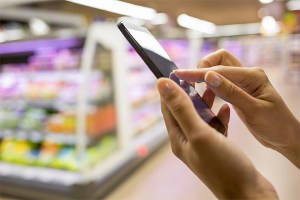Food and grocery retailing is one of the world’s oldest and largest industries. According to Grand View Research, the global market size is expected to reach $12.24 trillion by 2020. Changing consumer lifestyles and food choices are driving structural changes in the business models of food retailers.
Before we offer insights into the future of the food and grocery industry, it’s important to understand the history. Winston Churchill famously said: “The farther back you can look, the farther forward you are likely to see.” Ancient markets and agoras have been in place since the recorded time. Food from local farmers was one of the most basic commodities traded in those markets.
Small corner stores that included butchers, bakers and greengrocers were the backbone of food retailing until the mid-1800s. The owners knew their customers and the assortment was exactly limited to what the store clientele wanted. The early twentieth century saw the rise of chain store retailing with the arrival of The Great Atlantic & Pacific Tea Company (founded in 1859). This era saw the introduction of customer self-service, modern aisles, expanded assortment and efficiency in the supply chain.
The new concept of ‘Supermarkets’ started to spread around the world. Co-operative Food and Premier Supermarkets were one of the first fully self-service supermarkets to open in the UK during the mid-twentieth century. Walmart in the US and Carrefour in Europe were the first to develop the concept of hypermarkets. In the ’70s and ’80s, discounters such as Lidl and Aldi entered the market by offering lower prices with their own branded products (aka Private Label).
With the advent of the Internet in the 90s and the digital revolution of the 2000s, the power of retailing started to shift back to the consumer. In 2017, Amazon acquired Whole Foods in the US while in China, Alibaba invested in Sun Art Retail with ‘New Retail’ experience. We are now witnessing digitisation of the entire food value chain from farm to fork.
Fast-forward to 2025: what does the future of food retailing look like? Let’s analyse and predict the mega disruptions in this sector:
1. Introduction of Smart Farming
According to the UN Food and Agriculture Organization, we need to boost worldwide food production by 70 percent in order to feed the anticipated population of 2050. Smart farming involves the integration of new technologies such as IoT, robotics (e.g. AgriBot) and sensors into existing farming practices to increase production efficiency, monitor harvest waste, reduce labour costs and improve the quality of agricultural products.
2. War on Food Waste Reduction
Around a third of all food produced globally is wasted. Consumers are starting to do business with grocers that share their values in ethically sourced and environmentally friendly products. Supermarkets of the future will incorporate better practices throughout the food life cycle, from production to consumption. These will include: food traceability and safety, source-to-shelf food labels, guaranteeing orders for suppliers to reduce farm waste, more fresh and local produce, ethical marketing practices and transforming surplus produce into healthy treats.
3. Digitisation of the Store
The role of the store will shift from a point of purchase to becoming a full-service vice food destination. Think re-allocation of space by shopping mission, in-store dining, cashier-less payment, connected shelves to prevent stock-outs, personalised offers and pricing. Store associates will be armed with advanced analytics via mobile apps to offer assisted selling, personalised service and manage back office operations. Finally, we can expect to see robots in our local grocery stores to greet and guide us.
4. Online Grocery, Voice and Last Mile
According to Forrester, the global online grocery market will grow at a CAGR of 17.3% to reach $334 billion by 2022, capturing 5.2% of total sales. Most of this spending will come from China, Japan, the US, the UK, and France. OC&C estimates that £3.5B will be spent through voice commerce by 2022 in the UK. As more consumers shop for groceries from home, grocers will respond by investing in last-mile logistics including automated micro-warehouses with targeted assortment and uber-style fast delivery.
5. Ready to Eat, Ready to Heat and Ready to Cook
Consumers’ cooking and eating habits are shifting with modern lifestyles. According to NPD Group, the ready-to-eat restaurant delivery market dominated by Uber Eats and JustEat is now worth £3.6B and grew 10% last year. Morrisons and Just Eat joined forces recently to open in-store takeaways. In the US, major supermarket Albertsons acquired Plated, a DIY ready-to-cook meal kit provider, to transform the Food Experience for Consumers. Grocers will focus on a wide range of on-demand culinary solutions to cater to consumer needs for different meals.
6. The Convergence of Food and Health
If we trace the history of processed, high carb and sugar-rich foods, we see a clear correlation with the growth of obesity and other chronic diseases. Grocers will integrate consumer healthcare data with food purchasing data to deliver personalised nutrition and food choices to consumers. In the US, Walmart is opening in-store health clinics and CVS is piloting a new concept store with more health care, less retail. A trend that is set to enter the UK very soon.
It’s an exciting time for the food and grocery retailing industry, and these six mega disruptions are set to shape consumer habits for the years to come. What is also becoming clear is how the leaders of today’s food retailers will need to shift gears in thinking to move away from the traditional approach to running their business – in fact, 75% of retail leaders believe digital transformation requires a new leadership mindset.
See how retail marketers are driving success in the coming year
From integrated retail experiences to personalised customer journeys, discover the trends redefining retail and consumer goods marketing in our latest report with insights from nearly 900 marketing leaders.

























